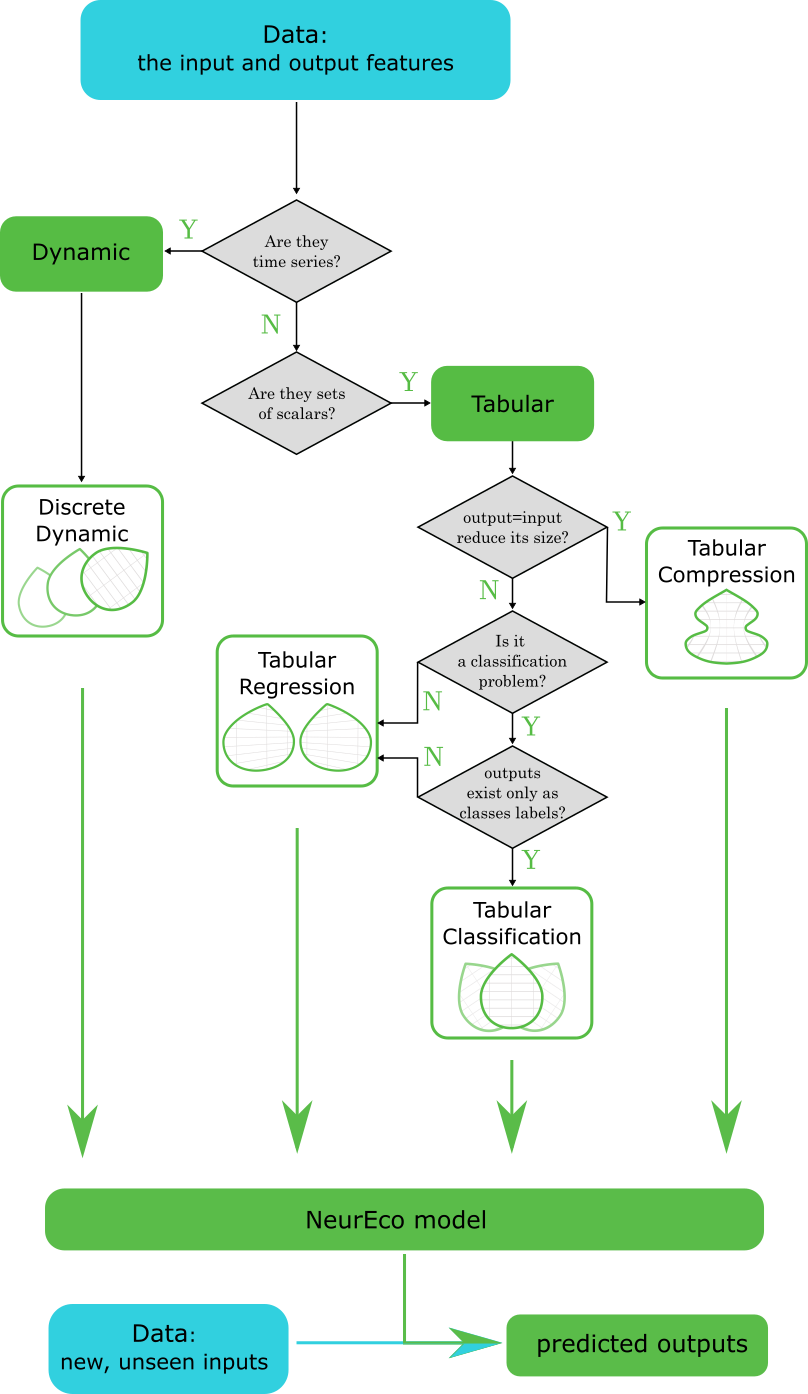NeurEco solutions
Contents
NeurEco solutions#
NeurEco is an ANN (artificial neural network) software. It generates parsimonious models automatically, using only the training data provided by the user.
How it works in practice?#
The user knows their problem (depending on application: system, process, solver, etc.) very well. Imagine that they have an intuition (depending on situation: knowledge, educated guess, hope, etc.) that some features of this problem (called output features) can be deduced from a set of other features of this problem (called input features).
For the sake of example, let us consider a problem of energy consumption of a house. In this case the output features are represented by a single parameter: energy consumption, and the input features by, let us assume, five parameters: temperature difference between inside and outside, wind direction, wind speed, sunshine intensity and relative humidity. By measuring all these features at different moment of time, the user gathers a data set: for each sample in this data set, five input features are placed in accordance with the corresponding value of the output feature. What the user would like to have is a predictive model, that would take the values of the input features and predict the value of the output features. Here, the user’s knowledge of the problem are of the utmost importance, because if there is a important input feature forgotten, let us say boolean for open/close windows, such predictive model is not likely to be very accurate. Basically, the user is looking for an approximation function between input features ant output features. Given the data, NeurEco constructs this approximation function in form of a Neural Network.
Available NeurEco Templates#
For now, NeurEco works with two families of problems:
Tabular problems: generating static ANN models. As in the energy consumption example, both input and output features are sets of scalar parameters
Dynamic problems: generating dynamic RNN (recurrent neural network) models. Both input and output features are represented by time series.
Note that in the near future, a new convolution-based family will be added to the product to handle the problems where the inputs are represented on regular grids (for example regression problems with physical fields as inputs).
The following flowchart gives a starting idea of which NeurEco template to choose for the problem at hand:

